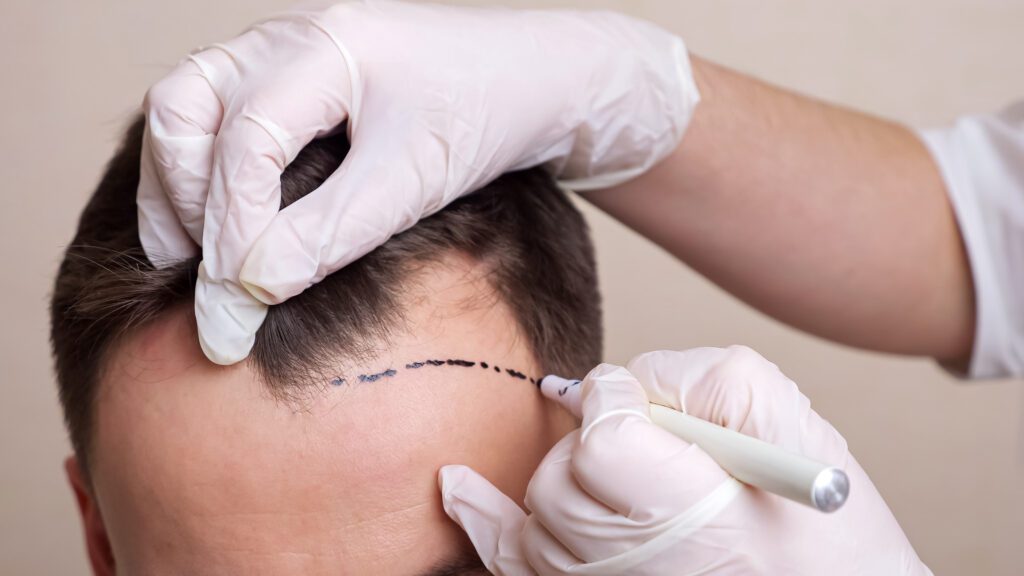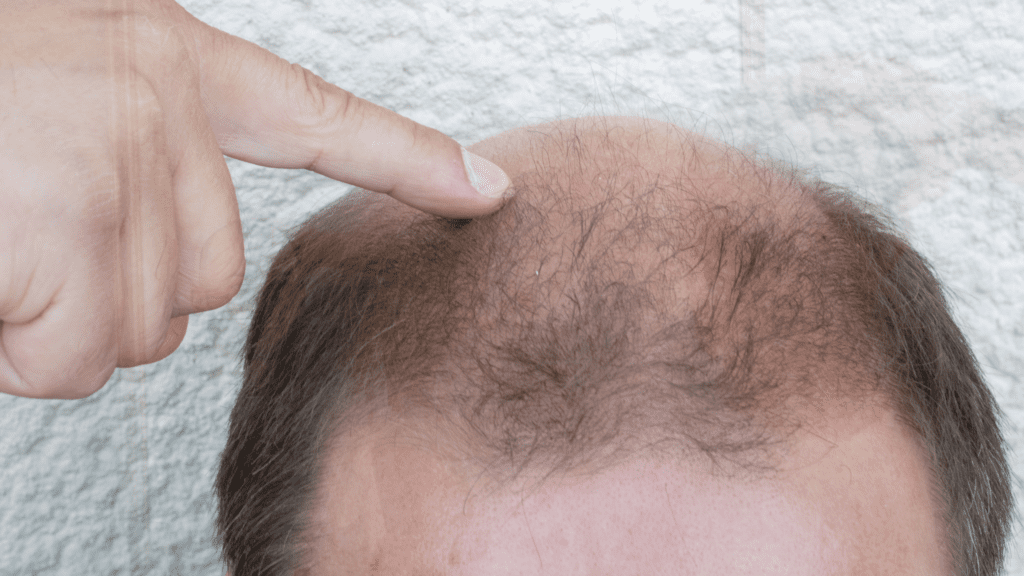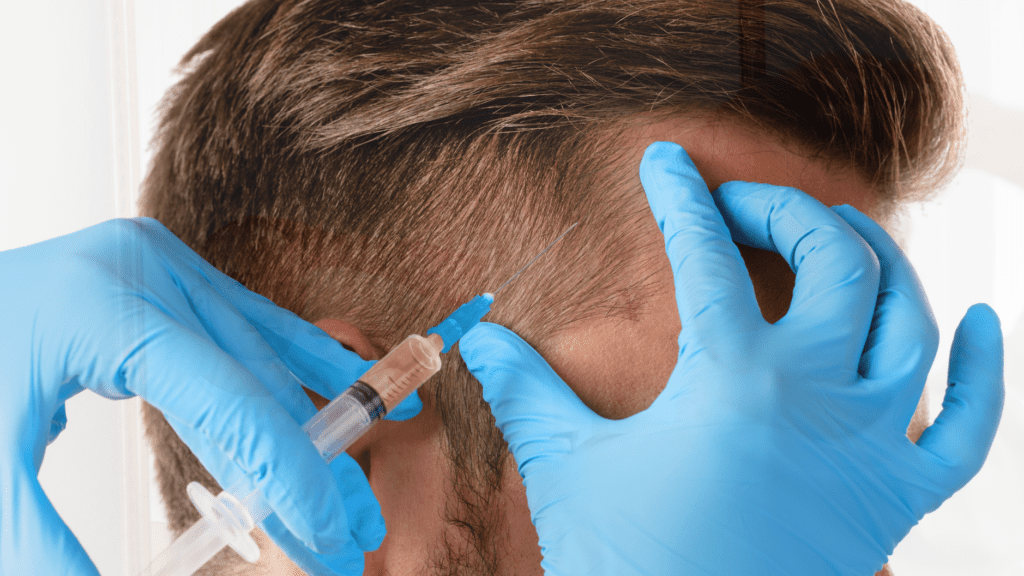Εισαγωγή
Hair transplantation has become a popular solution for those dealing with hair loss, offering a promise of restored confidence and a full head of hair. However, many people wonder, can transplanted hair fall out after 2 years? This article will delve into the factors affecting transplanted hair longevity, the hair growth cycle post-transplant, and how to maintain healthy hair after the procedure. We’ll provide insights into the possible causes of hair loss post-transplant and practical tips to prevent it.
Κατανόηση της Μεταμόσχευσης Μαλλιών
What is Hair Transplantation?
Hair transplantation is a surgical procedure designed to address hair loss by moving hair follicles from one part of the body (usually the back or sides of the scalp) to areas experiencing thinning or baldness. The primary goal is to create a natural-looking hairline and improve hair density.
Types of Hair Transplant Procedures
Three main types of hair transplant procedures are Follicular Unit Extraction (FUE), Follicular Unit Transplantation (FUT) and Direct Hair Implantation (DHI):
- Follicular Unit Extraction (FUE): This method involves extracting individual hair follicles from the donor area and implanting them into the recipient area. FUE is less invasive, leaves minimal scarring, and has a shorter recovery time.
- Follicular Unit Transplantation (FUT): In this technique, a strip of skin with hair follicles is removed from the donor area. The strip is then divided into individual follicular units and transplanted to the recipient area. FUT can provide a higher number of grafts in a single session but may leave a linear scar.
- Direct Hair Implantation (DHI): DHI is a more advanced technique that uses a specialized tool called a Choi Implanter Pen. Hair follicles are extracted from the donor area and directly implanted into the recipient area without the need for creating incisions beforehand. This method allows for more precise placement of hair follicles, resulting in a natural look and faster recovery time.
The Hair Transplantation Process
The hair transplantation process typically involves several steps:
- Consultation and Planning: Discuss your goals with a surgeon, who will assess your hair loss and determine the best approach.
- Preparation: The donor area is trimmed, and local anesthesia is applied.
- Extraction: Hair follicles are harvested from the donor area.
- Implantation: Follicles are implanted into the recipient area.
- Post-Procedure Care: Follow your surgeon’s instructions for aftercare to ensure optimal results.

The Hair Growth Cycle Post-Transplant
Stages of Hair Growth
Understanding the hair growth cycle is crucial for managing expectations after a hair transplant. Hair growth occurs in three main stages: Anagen, Catagen, and Telogen.
- Anagen (Growth Phase): This is the active growth phase where hair follicles produce new hair. It lasts 2-7 years.
- Catagen (Transition Phase): A brief phase where hair growth stops, and the follicle shrinks. It lasts about 2-3 weeks.
- Telogen (Resting Phase): Hair remains in the follicle but does not grow. This phase lasts around 3 months before the hair sheds, and new growth begins.
Initial Shedding Phase
Post-transplant, it’s common to experience “shock loss” or temporary shedding of transplanted hair. This occurs within the first few weeks as the follicles adjust to their new location. While this may be concerning, it’s a normal part of the process.

Growth Stabilization Phase
After the initial shedding, the transplanted hair enters the anagen phase, starting new growth. This process can take several months, with full results typically visible after 12-18 months.
Can Transplanted Hair Fall Out After 2 Years?
Common Causes of Hair Loss Post-Transplant
Despite successful transplantation, there are several reasons why transplanted hair might fall out after 2 years:
- Shock Loss: Although temporary, some transplanted hair may shed due to the trauma of the procedure.
- Genetic Factors: If the underlying cause of hair loss is genetic (androgenetic alopecia), surrounding non-transplanted hair may continue to thin.
- Health and Lifestyle Influences: Poor diet, stress, and certain medical conditions can affect hair health, leading to potential loss of transplanted hair.
How Often Does It Happen?
Transplanted hair falling out after 2 years is relatively rare, especially if the procedure was performed by a skilled surgeon and the patient followed post-operative care instructions. However, ongoing hair loss in non-transplanted areas can create the appearance of thinning if not addressed.
Case Studies and Statistics
Research indicates that most patients retain their transplanted hair long-term. According to a study published in the Journal of Clinical and Aesthetic Dermatology, over 90% of patients report satisfaction with their hair transplant results two years post-procedure. However, individual experiences may vary.
Preventing Hair Loss After Transplant
Post-Transplant Care Tips
Proper post-transplant care is essential to ensure the longevity of transplanted hair. Here are some tips:
- Scalp Care: Keep the scalp clean and avoid scratching or rubbing the transplanted area.
- Medication and Supplements: Use prescribed medications like minoxidil or finasteride to promote hair growth and prevent further loss.
- Regular Check-ups with Your Surgeon: Schedule follow-up appointments to monitor progress and address any concerns.
Healthy Habits for Hair Maintenance
Maintaining healthy hair requires a holistic approach. Here are some habits to adopt:
- Diet and Nutrition: Eat a balanced diet rich in vitamins and minerals, particularly those that support hair health like biotin, zinc, and iron.
- Stress Management: Chronic stress can contribute to hair loss. Practice stress-reducing activities such as yoga, meditation, or regular exercise.
- Avoiding Harmful Hair Practices: Minimize the use of heat styling tools, harsh chemicals, and tight hairstyles that can damage hair.

When to Seek Professional Advice
Recognizing Unusual Hair Loss Patterns
It’s important to recognize when hair loss patterns deviate from normal post-transplant shedding. If you notice excessive hair loss or thinning in the transplanted area after 2 years, it may be time to seek professional advice.
Consulting Your Surgeon
Your hair transplant surgeon is your best resource for addressing concerns about hair loss. They can assess your situation, identify potential causes, and recommend appropriate treatments.
Possible Treatments and Solutions
If transplanted hair does fall out, various treatments can help:
- Additional Transplant Sessions: In some cases, further transplantation may be necessary to achieve desired density.
- PRP Therapy (Platelet-Rich Plasma): This treatment involves injecting platelets from your blood into the scalp to stimulate hair growth.
- Low-Level Laser Therapy (LLLT): LLLT uses red light to promote hair growth and improve hair density.
- GFC (Growth Factor Concentrate) Therapy: This innovative treatment involves using concentrated growth factors derived from the patient’s blood to enhance hair growth and rejuvenate hair follicles.
- Exosome Therapy: Exosomes are tiny vesicles that contain growth factors and proteins. Injecting exosomes into the scalp can stimulate hair growth and improve the health of existing hair.
- CRP (Conditioned Regenerative Plasma): CRP therapy utilizes plasma that has been conditioned with growth factors to promote hair growth and strengthen hair follicles.
- Stem Cell Treatment: This cutting-edge approach involves using stem cells to regenerate and repair damaged hair follicles, potentially leading to significant hair regrowth.

Σύναψη
In conclusion, while it is possible for transplanted hair to fall out after 2 years, understanding the causes and taking preventive measures can significantly reduce the risk. Maintaining a healthy lifestyle and following your surgeon’s advice are key to long-term success. If you experience unusual hair loss, don’t hesitate to seek professional guidance. Your hair transplant journey doesn’t end after the procedure; it’s an ongoing process of care and maintenance.
Engage with your readers: Have you experienced hair loss after a transplant? Share your story in the comments below or contact us for a consultation!
Maintaining the results of your hair transplant requires commitment and proper care. By following the advice in this article, you can enjoy a fuller, healthier head of hair for years to come.

